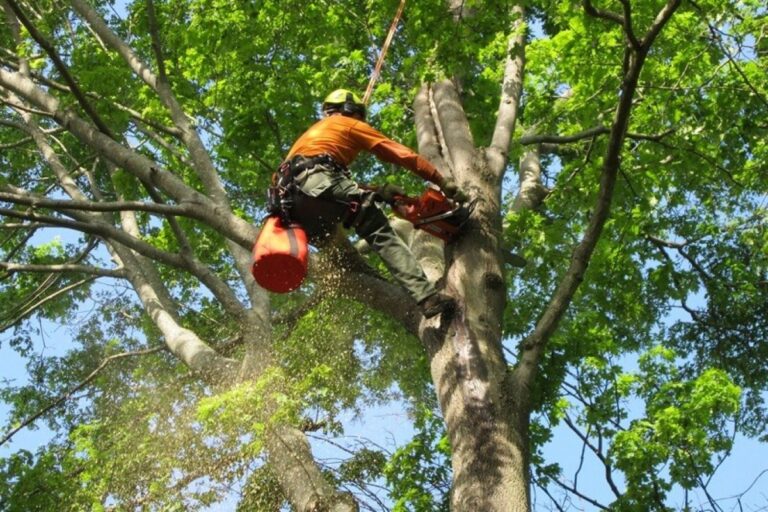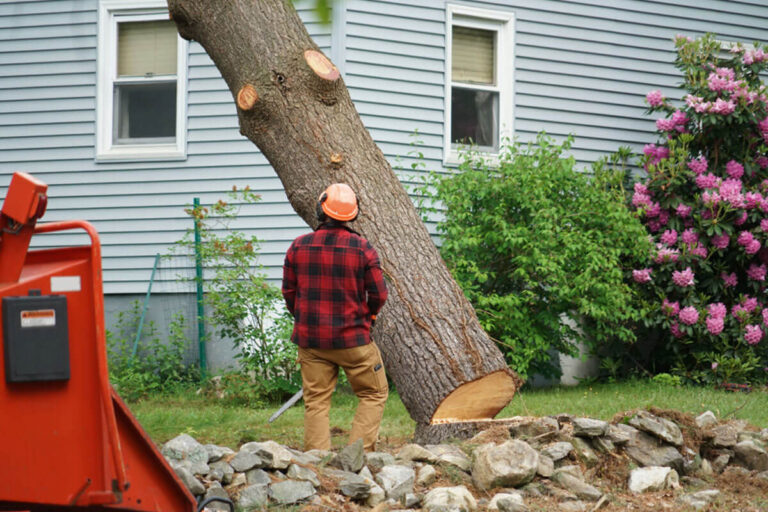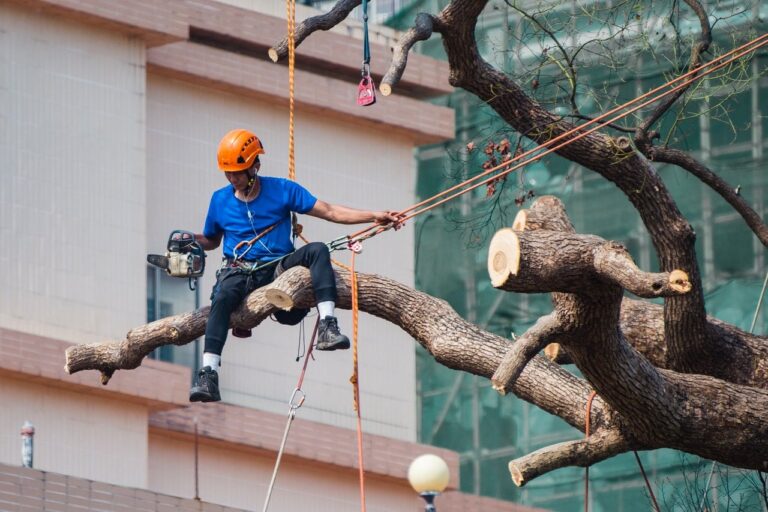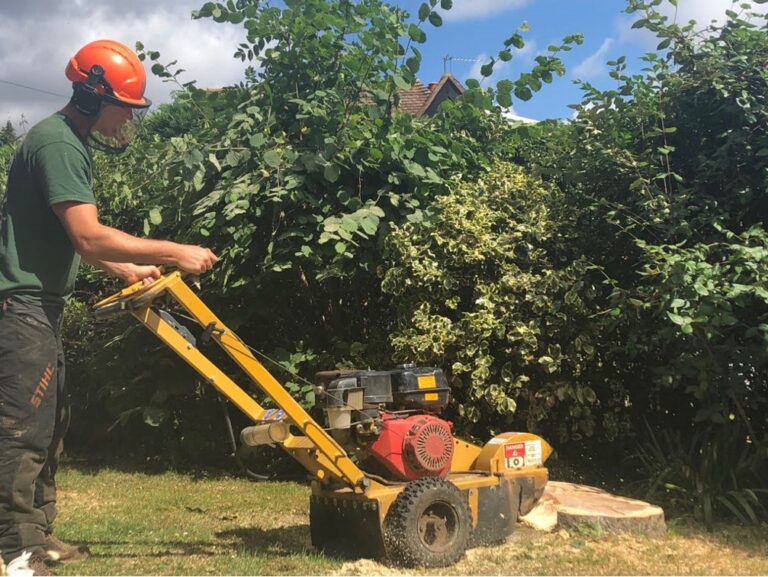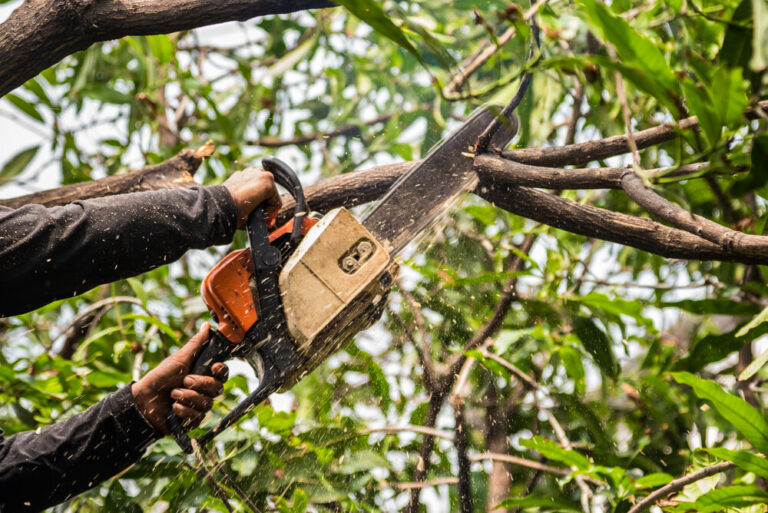Trees are an essential part of our landscape, providing shade, beauty, and numerous environmental benefits. However, there are times when tree cutting becomes necessary to maintain a healthy and well-balanced outdoor space. In this article, we will explore the importance of proper tree cutting techniques and discuss essential safety measures to ensure a successful and safe tree cutting experience. We will also examine situations in which professional assistance should be sought and provide tips on maintaining your landscape after tree cutting.
Understanding the Importance of Proper Tree Cutting
Cutting trees might seem like a straightforward task, but it is crucial to understand its impact on the overall health of your landscape. Proper tree cutting techniques not only ensure the safety of your property and loved ones but also contribute to the longevity and growth of trees.
The Impact on Landscape Health
Tree cutting plays a vital role in maintaining the health of your landscape. Removing dead or diseased branches helps prevent the spread of infections and enhances the overall aesthetics of your outdoor space. Additionally, by thinning the canopy, you allow more light and air penetration, promoting the health and growth of other plants in your garden.
Moreover, strategic tree cutting can also improve the biodiversity of your landscape. By selectively trimming certain trees, you create opportunities for different species of plants to thrive. This diversity not only adds visual interest to your garden but also creates a more resilient ecosystem that can better withstand environmental changes.
The Role in Tree Growth and Longevity
Proper tree cutting techniques directly influence the growth and longevity of trees. Pruning, for instance, stimulates new growth and directs the tree’s energy towards specific areas, resulting in a healthier and structurally sound tree. An appropriately pruned tree also has a better chance of withstanding storms and other external factors.
Furthermore, tree cutting can aid in shaping the growth pattern of trees, ensuring they develop in a way that enhances their natural beauty and structural integrity. By carefully removing certain branches, you can encourage the tree to grow in a particular direction or shape, creating a visually appealing silhouette that complements your landscape design.
Essential Tree Cutting Techniques
When it comes to tree cutting, various techniques are used depending on the specific goals and needs of the tree. Let’s explore some of the essential techniques that can help you maintain a healthy and visually appealing landscape.
Tree cutting is not just about removing branches haphazardly; it is a delicate process that requires careful consideration of the tree’s health and aesthetics. By employing the right techniques, you can ensure the longevity and beauty of your trees while also enhancing the overall landscape of your property.
Pruning for Health and Aesthetics
Pruning involves removing dead or diseased branches, water sprouts, and suckers. This technique not only promotes the tree’s overall health but also enhances its appearance. Proper pruning can shape the tree, improve air circulation, and increase sunlight exposure to lower branches.
When pruning, it is essential to make clean cuts to prevent tearing or damaging the tree’s bark. By following the natural branch collar and avoiding cutting too close or leaving stubs, you can help the tree heal properly and reduce the risk of infections.
Thinning for Light and Air Penetration
Thinning refers to selectively removing branches to reduce the density of the tree’s canopy. By thinning, you provide better airflow and sunlight penetration, thereby reducing the risk of fungal diseases and promoting the growth of understory plants.
Thinning should be done strategically to maintain the tree’s overall shape and balance. It is important to assess the tree’s structure and consider the impact of each cut on its growth pattern. Proper thinning can also help reduce wind resistance, minimizing the risk of branch breakage during storms.
Raising for Underneath Clearance
Raising involves removing the lower branches of a tree to create clearance underneath. This technique is especially important in urban areas to ensure safety and maintain clear sightlines. By raising the tree’s crown, you also allow for better access to your property and reduce the risk of damage during storms.
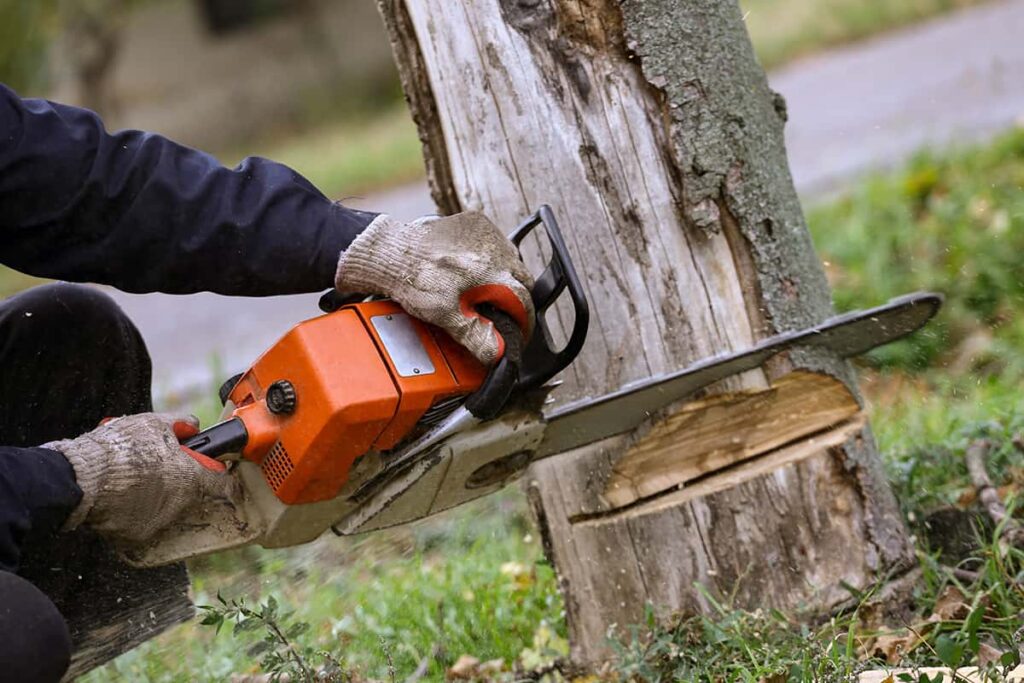
When raising a tree, it is crucial to consider the tree’s natural form and growth habits. Careful pruning of lower branches can improve visibility, enhance curb appeal, and create a more open and inviting space. Additionally, raising the canopy can benefit the tree by redirecting energy to upper growth, promoting overall health and vigor.
Safety Measures in Tree Cutting
Tree cutting can be hazardous, and it requires the implementation of proper safety measures to avoid accidents or injuries. Always prioritize safety when performing tree cutting activities.
Before embarking on any tree cutting project, it is essential to conduct a thorough assessment of the tree and its surroundings. Look out for any potential hazards such as power lines, nearby structures, or uneven terrain that could pose a danger during the cutting process. Planning ahead and identifying risks can help you mitigate potential accidents and ensure a safer working environment.
Personal Protective Equipment (PPE)
Wearing the appropriate personal protective equipment is crucial when cutting trees. This includes a hard hat to protect your head, safety goggles to shield your eyes from debris, gloves to ensure a firm grip, and sturdy boots to protect your feet from potential hazards.
Additionally, consider wearing ear protection to reduce the noise levels generated by cutting equipment, and high visibility clothing to make yourself more visible to others, especially if you are working near roadways or in low light conditions. Personal protective equipment not only safeguards you from injuries but also enhances your overall comfort and efficiency while working.
Safe Use of Cutting Tools
Using cutting tools safely is paramount to avoid accidents. Ensure that all your cutting tools, such as chainsaws or loppers, are in good working condition. Follow the manufacturer’s instructions and seek professional training if needed. Always use the appropriate tool for the task at hand and maintain a secure grip while operating the equipment.
Regularly inspect and maintain your cutting tools to keep them sharp and functioning correctly. Dull blades can cause kickback or snagging, increasing the risk of accidents. Proper maintenance not only ensures a safer cutting experience but also prolongs the lifespan of your tools, saving you time and money in the long run. Remember to store your tools in a secure and dry location after use to prevent rust or damage, further ensuring their safety and effectiveness for future tree cutting projects.
When to Call a Professional
While some tree cutting tasks can be done by homeowners, certain situations call for professional assistance. Recognizing complex tree cutting scenarios is essential to ensure the safety of both the individual performing the task and the property.
When it comes to the well-being of your trees and the safety of your property, knowing when to call a professional tree cutting service can make all the difference. Understanding the signs that indicate a task is beyond your expertise can save you time, money, and potential hazards.
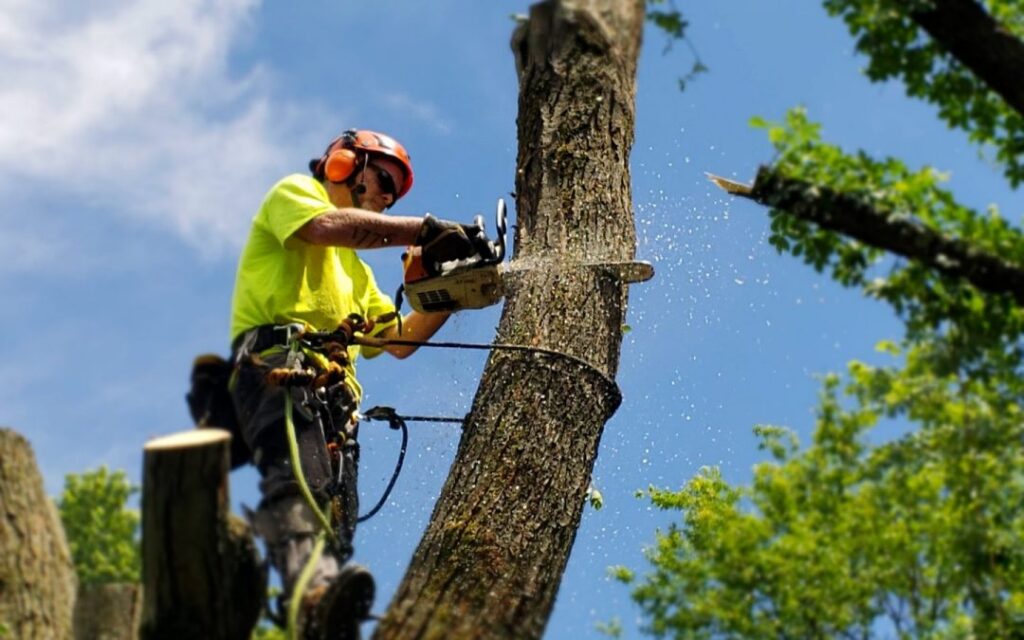
Recognizing Complex Tree Cutting Scenarios
If a tree is situated near power lines, structures, or requires climbing to reach the branches, it is best to call a professional. These complex scenarios require expertise, specialized equipment, and knowledge of safety protocols to prevent accidents or damage.
Furthermore, trees that are leaning precariously, showing signs of disease, or have extensive root systems near underground utilities pose additional challenges best handled by professionals. Their trained eyes can assess the situation accurately and determine the most effective course of action to mitigate risks.
Benefits of Professional Tree Cutting Services
Professional tree cutting services offer numerous advantages. They have the necessary equipment, skills, and experience to handle tree cutting tasks efficiently and safely. Additionally, they can provide expert advice on maintaining the health and beauty of your landscape post-cutting.
Moreover, professional arborists understand the biology of trees, ensuring that pruning and cutting are done in a way that promotes healthy growth and minimizes stress on the tree. Their knowledge extends to identifying potential issues before they escalate, ultimately saving you from costly repairs or replacements down the line.
Maintaining Your Landscape Post-Tree Cutting
After tree cutting, it is essential to focus on landscape maintenance to ensure the long-term health and aesthetics of your outdoor space.
When dealing with the aftermath of tree cutting, it’s crucial to pay attention to the ecosystem of your landscape. Tree removal can impact the soil quality, sunlight exposure, and overall biodiversity of your yard. Consider consulting with a landscaping expert to assess the environmental impact and develop a plan for restoring balance to your outdoor environment.
Dealing with Tree Stumps
Tree stumps can be unsightly and pose potential tripping hazards. They can also serve as breeding grounds for pests and diseases. Removing tree stumps or considering stump grinding can help you reclaim valuable space and prevent these issues.
Furthermore, repurposing tree stumps can add a unique touch to your landscape design. Transform them into natural planters, decorative elements, or seating arrangements to blend functionality with natural aesthetics. By upcycling tree stumps, you not only eliminate potential hazards but also infuse creativity into your outdoor space.
Tree Replacement and Landscape Restoration
Consider replacing trees that were cut with suitable alternatives to maintain a vibrant and balanced landscape. Select trees that grow well in your region and complement your existing plants. Additionally, focus on landscape restoration by refreshing mulch, fertilizing, and watering regularly to support healthy growth.
Integrating native plants into your landscape can enhance its resilience and sustainability. Native species are well-adapted to the local climate and soil conditions, requiring less maintenance and resources to thrive. Research indigenous flora in your area and incorporate them into your post-tree cutting landscape to create a harmonious and thriving ecosystem.
By understanding the importance of proper tree cutting techniques and implementing the necessary safety measures, you can ensure a healthy landscape that thrives for years to come. Whether you handle the tree cutting yourself or seek professional assistance, always prioritize the well-being of your outdoor space, trees, and personal safety.
Related: Tree root removal.


